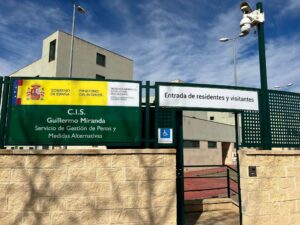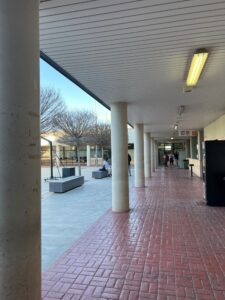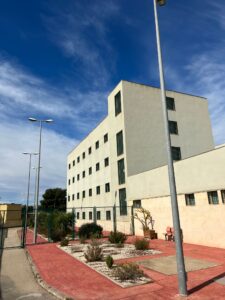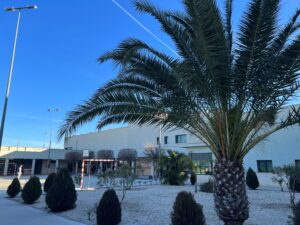 Promoting professional
Promoting professionalPrison Practice.
Author: Carlos Fernández Gómez (Spanish Prison Governor and Spanish liaison of EuroPris)
March, 2023
Spanish Penitentiary Organic Law (1979) establishes three levels of judicial sentences served in prison: level 1, for high-risk inmates is served in closed units (isolation); level 2 for common inmates is served in common and closed prisons; and level 3 is an open regime where sentences are served in Social Insertion Centers (SIC) or open prisons, (the terms are used interchangeably below). Here, people can leave the prison for some hours a day to work, attend intervention programmes, training courses or manage personal issues such as medical appointments. Traditionally, prisoners have been transferred to an SIC from ordinary prisons because their behaviour is good or they have a low risk of re-offending (a process known as “penitentiary progression”). In 2021, an internal directive (6/2020) was published, including relevant changes to this process. The Directive allows people sentenced to prison to enter an SIC directly with no need for progression from ordinary prisons and so avoiding some of the damaging side effects of imprisonment by serving the sentence in the community. Conditions are needed. This change has also resulted in an interesting difference in the way the open regime is understood and managed.
Key words: open-regime, open prison, penitentiary progression, direct entry, community, Social Insertion Center (SIC).

Introduction
Spanish Prison Rules (1996) and the General Organic Law (1979), describe three levels of penal sentences: closed units, common and closed prisons and Social Insertion Centers (SIC) or open prisons. The first is for certain criminal typologies such as terrorism, and to individuals who show extreme bad behaviour, and so pose a significant risk to prison staff and other prisoners. As it implies isolation for most of the day, this situation is reviewed every three months. The second, understood as an ordinary regime, includes the majority of the Spanish prison population. In this case, their situation is reviewed every six months. According to the assessments and observations carried out by psycho-social staff, progression is possible. Progression takes place from the first level to the second, and from the second to the third, which is the open regime, and implies the transfer to Social Insertion Centers (SIC). These centers are also prisons and belong to the Spanish General Secretariat of Penitentiary Institutions, in the same way as ordinary prisons. They can also be called open prisons.
It is not mandatory to go through that progressive pathway. This means a prisoner can start serving a sentence in the first or the second level and not transferred to the SIC and so finally being released from the ordinary prison. In other cases, individuals are transferred to open prisons following their good behaviour or being at a low risk of reoffending and are finally released from the open-regime.
Until now, it has not been possible to begin serving the sentence at a SIC. This is because initial classification, delivered no later than two months after arrival at the prison, has always classified individuals mainly in second or occasionally first level.
Open regime has always been the final step of the penal pathway for those benefitting from this progression.


Background
Spanish Prison Rules and the General Organic Law, as well as some internal directives, clarify and describe the “classification process” when someone enters the prison system. Ours is not a strict progressive model, but there are some similarities: it is not possible to be progressed from first to third level, and, until now, it was not possible to enter a SIC directly as progression from an ordinary prison was needed.
Open regime has been understood as the final step of the personal process before full reintegration into society. Doubts about penitentiary progression have been common amongst prison staff, particularly treatment staff (psychologists, educators, social workers and jurists). The open regime and the entry into SIC have been considered a “benefit”, as if imprisonment had come to an end.
The fact that SIC are also prisons but with fewer security measures and more flexibility, has been underrated in some cases, and the open regime wrongly understood as a “gift” to the prisoner. However, SIC are under the same prison rules and do not include release.
At the same time, we have considered the ordinary regime as the only one that can provide effective treatment for individuals. This is totally true in most cases where deprivation of liberty and custody are also needed. We all agree strict control is necessary, but not in all cases. Spanish Prison Rules are founded on the “individualization” principle: the individual must always be studied and classified according to his or her needs to avoid the “one-size-fits-all” approach.
Taking this into consideration, it is true that the ordinary regime has proved to be a useful framework for rehabilitation and re-education programmes, as well as control and custody. On the other hand, the open regime must enable individuals to start living in close contact with the community.
Some questions arise. Is ordinary prison necessary in all cases? Is ordinary prison avoidable in other cases? Why should someone go to an ordinary prison if the open regime is the better choice? Is treatment equally effective in open prisons for some criminal profiles? Is ordinary imprisonment, with some of its damaging side effects, really necessary in all cases? Why wait for the progression if it is better for a prisoner to be in an open prison from the very beginning?

Body
Directive 6/2020 supports, for the first time, that individuals may enter the SIC to serve their prison sentence without the need to go to an ordinary prison as a first step. Some conditions are specified in the Directive, the most relevant being:
After the publication of this directive, open prisons were asked to develop their own “Direct Access Protocol”. SIC were left free to adapt the Directive to their own particular context, all protocols being finally approved by the Spanish General Secretariat of Penitentiary Institutions.
Despite some general initial reluctance, no incidents at the SIC have been reported since the implementation of the Directive, and criminal risk in society has not been increased at all. Besides, prisoners in the open regime can be returned to ordinary prisons if they fail to cope with such flexibility, so security is not really weakened.
Next, some types of crime, usually located in ordinary centers, need to be considered and studied. Rehabilitation programmes, traditionally implemented in custody, may be delivered in open prisons. New adaptations, such as informative posters or adaptation protocols have been successfully delivered.
Besides the direct entry into an open regime, there is another reason for strengthening this level of penal sentences. Re-offending rates are much lower when someone has been progressed from an ordinary to open regime. This is reported in the recently published study delivered by the Spanish General Secretariat of Penitentiary Institutions, between 2009 and 2019. Direct release from an ordinary prison is not always the best choice.
Conclusion
In 2021, 833 prisoners (710 men and 123 women) benefitted from this approach. Taking all this into consideration, we should agree this is quite a new approach and promote the sentencing model. The open regime is absolutely suitable for most criminals who do not need lengthy stays in custody.
Today, the pathway into social reintegration may start in open prisons, and social ties do not need to be broken during that period. Alternative measures to prison, managed in the SIC premises, have also grown including interventions, re-education and reintegration into the community.
Serving a prison sentence needs to be managed to be legally compliant at all times. This approach is fully compatible with the study of personal needs and individual profiles (the individualization principle). This has proved to be possible and positive.
Going back to previous questions and taking into account the results of the implementation of the Directive, ordinary prisons are not the sole setting to have in mind for certain individuals. As for treatment and intervention programmes, open prisons are equally suitable for delivering rehabilitation activities. Also, ordinary prisons can have undesirable effects such as a prisoner’s social environment being broken, that can be avoided when there are recommendations in terms of treatment for maintaining connections with personal lives. Penitentiary progression is certainly a common way to prepare individuals for their release, but we should broaden the perspective: the focus should be on what really works in terms of social reintegration.
Our Constitution is very clear on the objectives of imprisonment. They are re-education and social reintegration. We must agree that finding the most suitable rehabilitation pathway is at the core of our work.
Click here to read Directive 6/2020 (Spanish)
Click on the download button below to view the article in pdf.
Download